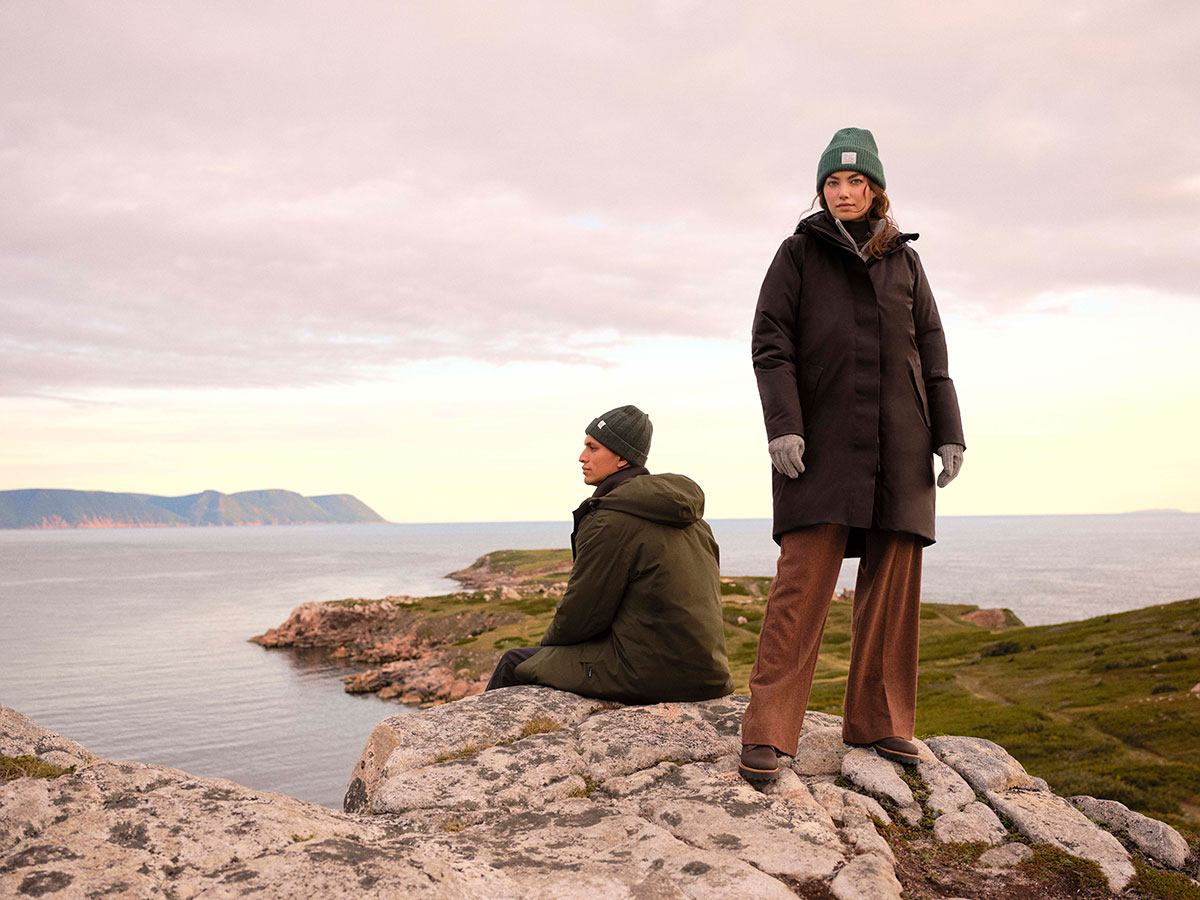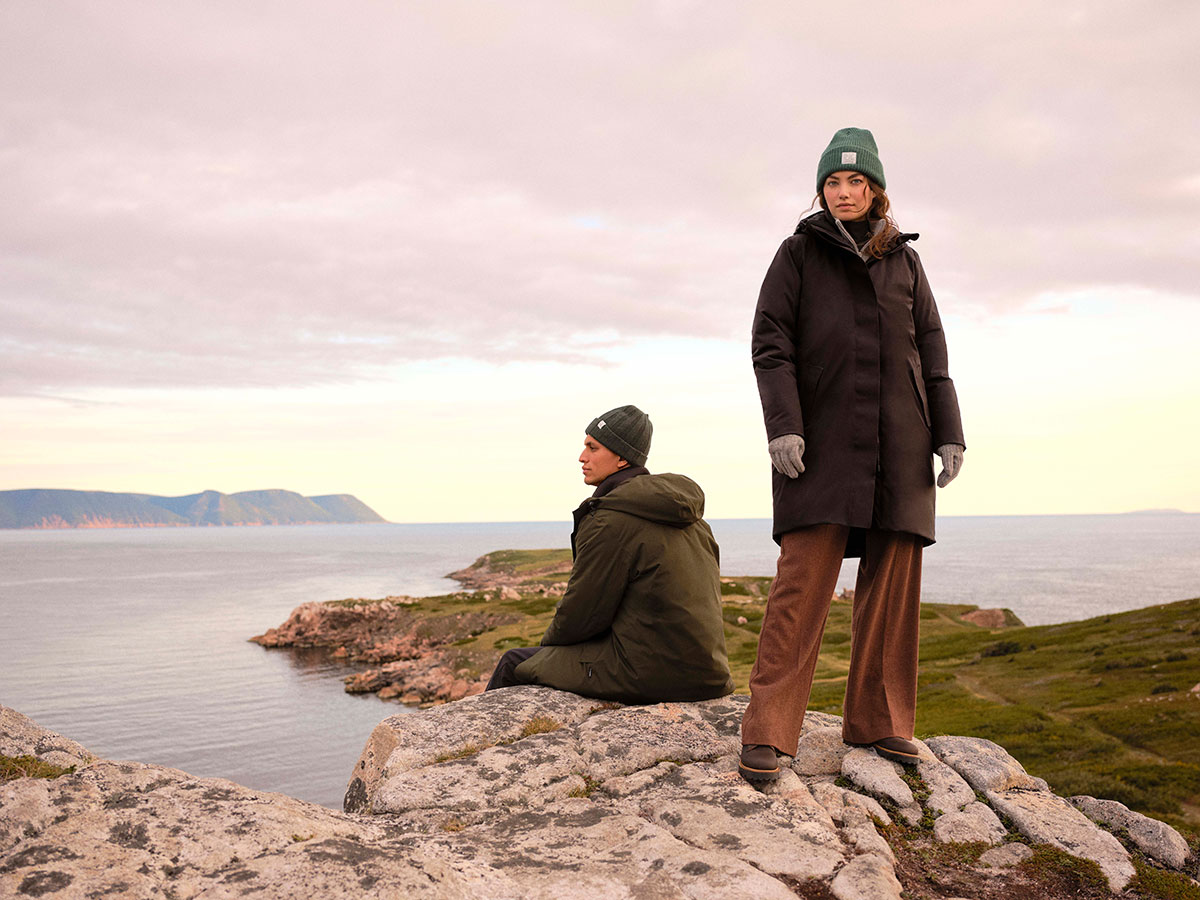
Canadian fashion industry acting to reduce its impact on the planet: expert
 Frank and Oak’s recently launched high-performance, sustainable outerwear collection is made from recycled plastic (Image courtesy of Frank And Oak)
Frank and Oak’s recently launched high-performance, sustainable outerwear collection is made from recycled plastic (Image courtesy of Frank And Oak)
As the notion of sustainability takes hold in various sectors of the economy, Canada’s fashion industry is joining in on the action.
“Sustainability is a huge topic right now,” says Michelle Walc, field education co-ordinator at George Brown College’s School of Fashion Studies. “People are becoming more aware that the fashion industry can have a huge impact on the planet—whether it be in the processes and materials used or in the way workers are treated. So a lot of ethically focused companies are popping up and they’re being supported and embraced, because people want to do the right thing.” She adds that George Brown just launched a sustainable production program that has been very successful. “Students are finding placements and working with more local brands or going out and working in production facilities. And they’re learning about their sustainable initiatives.”
Here are some homegrown companies with a focus on sustainable fashion. (For information on Canada’s Accountings Standards Board’s reporting guidance for forward-looking companies, see sidebar below.)
Encircled: Made in Canada, sustainable, multi-way clothing. “Encircled strives to function ethically though every stage of production,” says the company’s website.
Inland: A twice-yearly shopping event that highlights Canadian designers. The founder and creative director is George Brown alumna Sarah Power, whose focus is on unique, sustainable, made-in-Canada fashion: “All collections presented at Inland are ethically made or manufactured in Canada,” says the site.
 Each coat in the new 12-piece collection has been manufactured to prevent resource depletion through the increased use of recycled materials (Image courtesy of Frank And Oak)
Each coat in the new 12-piece collection has been manufactured to prevent resource depletion through the increased use of recycled materials (Image courtesy of Frank And Oak)
Frank And Oak: A Montreal fashion company that, according to its site, is “committed to minimizing our impact on the environment by increasing the usage of recycled materials and reducing waste to landfill. We are also firm believers in equality and promoting socially responsible economic development.”
Joe Fresh: The retail chain and brand, created by fashion icon and one-time accountant Joe Mimran for Loblaw Companies Ltd., is currently working with George Brown College on a textile recycling research project, says Walc. “They’re looking at how they can improve the textile waste situation.”
Cedar and Vine: George Brown grad Jo Stewart is the designer of this casual, sustainable brand for those seeking something a little more natural, says Walc.
 Cedar and Vine’s promise to customers is to always be transparent, especially about the process of their products (Image courtesy Cedar and Vine)
Cedar and Vine’s promise to customers is to always be transparent, especially about the process of their products (Image courtesy Cedar and Vine)
Knix: Launched on Kickstarter in 2013, this company bills itself as the world leader in wire-free bras and functional underwear. “Every intimates product that we design (and redesign and redesign) is made with one goal in mind: to make you feel more comfortable in your own skin,” says the site.
Espe: A vegan design studio that produces handbags and accessories, including a 10-way convertible tote bag called Groovi (initially launched on Kickstarter). “Everything that goes into making your Espe product is ethically sourced and responsibly made,” it says on the company site.
A REPORTING FRAMEWORK FOR FORWARD-LOOKING BUSINESSES |
|---|
|
As companies move to more sustainable and ethical practices, Canada’s Accounting Standards Board (AcSB) is responding with ways to help them maintain high quality in their reporting. “Today, we’re seeing an evolution in the way companies communicate their value,” says AcSB chair Linda Mezon. “Companies are placing value on attributes such as ethically sourced textiles, transparency in their supply chain and the living wages they pay their staff. These are all examples of valuable measures that may not be reflected in current Canadian GAAP. “But the Accounting Standards Board does not want to tell these forward-thinking businesses that measures such as paying staff living wages or using ethically sourced textiles aren’t valuable. We do not want to prevent this important information from being communicated as they are valuable measures. So, we want to help these forward-thinking businesses with how to report these measures in a high-quality and consistent manner.” It’s with this goal in mind that the AcSB created the Framework for Reporting Performance Measures. “The framework is meant for a multitude of entities—from public to private companies, to not-for-profits and pension plans. And it has the guidance that forward-looking businesses need to develop and report on performance measures that help tell the story of their company and explain its value,” says Mezon. “The framework helps them implement and maintain controls over these measures to ensure they’re built on quality information and are consistently reported.” |
WANT TO LEARN MORE ABOUT SUSTAINABILITY REPORTING?
CPA Canada has resources that can help, including A starter’s guide to sustainability reporting. For more on climate change, see Climate change and Canadian business: The good, the bad and the realistic, Four ways climate change is affecting your organization...and what you can do, and Climate change adaptation and accountants’ roles.